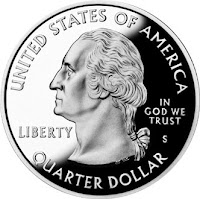 One project that I've been stalled on for a while (for a variety of reasons) is now hinging (snork) on finding suitable hardware. Actually, I've found good hinges, but the pulls are what really show / what people will be handling. As it will be in quarter-sawn Oregon White Oak with only simple detailing it seemed only appropriate to use Craftsman/Stickley-style hand-hammered copper hardware at least for the pulls. Rockler offers a line of hardware made by Stickley in cast copper - perfect, right? Well, maybe. Note that I said "cast" rather than "hand-hammered" - take a look at this close up of one of the pulls Rockler offers. I've only seen a few good Stickley pieces with this sort of pull, and they did not have the same feel as the one pictured above. But, "Patterned from the original designs of Gustav and Leopold Stickley, this cast copper hardware has been re-issued by the Stickley Furniture Company exclusively for Rockler!" means that commercially, these are about as close to the best match available, right?
One project that I've been stalled on for a while (for a variety of reasons) is now hinging (snork) on finding suitable hardware. Actually, I've found good hinges, but the pulls are what really show / what people will be handling. As it will be in quarter-sawn Oregon White Oak with only simple detailing it seemed only appropriate to use Craftsman/Stickley-style hand-hammered copper hardware at least for the pulls. Rockler offers a line of hardware made by Stickley in cast copper - perfect, right? Well, maybe. Note that I said "cast" rather than "hand-hammered" - take a look at this close up of one of the pulls Rockler offers. I've only seen a few good Stickley pieces with this sort of pull, and they did not have the same feel as the one pictured above. But, "Patterned from the original designs of Gustav and Leopold Stickley, this cast copper hardware has been re-issued by the Stickley Furniture Company exclusively for Rockler!" means that commercially, these are about as close to the best match available, right?I did check on a couple antique sites and found one that had a pair of real 1905 - 1912 Stickley pulls for $265. Ouch. This Popular Woodworking Blog entry has a few pictures of what original hardware looks like. Yep, not cast - made from coppersmithing / peening together pieces of copper sheet and cast or thick wire for the actual pulls.
This great blog entry by Mark A. DeCou on Lumberjocks shows a way I might get what I want, but not without learning some new tricks & buying some copper stock. There are commercial ways of getting a good patination on new copper work, I'd have to use one of those methods as bright copper isn't what I would be after. I think a trip to the bookstore may be in order, and perhaps a trip to a library as well. I can make or buy nice oak craftsman pyramid knobs for the pulls, but just not what I'm after. Any suggestions appreciated!








